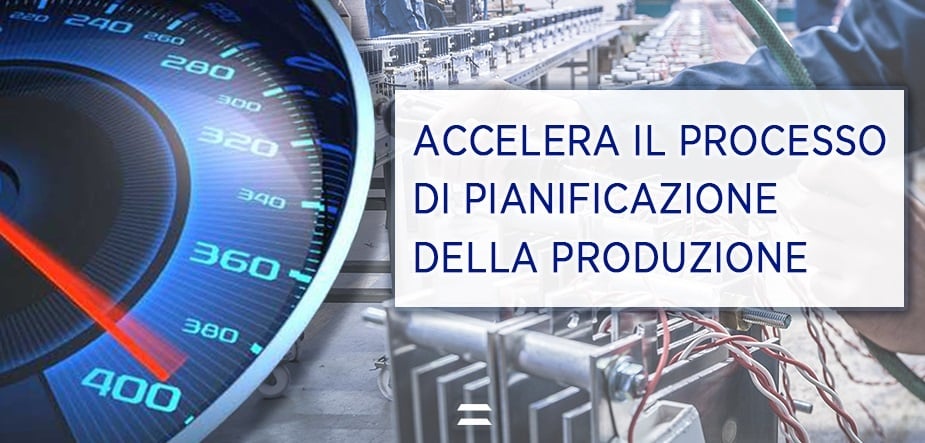In the production department of manufacturing companies, there is always one part of the process that is slower than the others. In some cases these “parts” can become bottlenecks that continually slow down the entire line. Being able to identify these bottlenecks is therefore of fundamental importance and results in significant performance improvements.
How to identify a bottleneck
There are several methods to identify bottlenecks within production processes:
- Accumulation: the first of all is definitely accumulation. The production line process that accumulates the longest tail is usually a bottleneck. This method of identifying bottlenecks is particularly useful in productions that produce individual items, such as a bottling line. In this case you can easily check where the bottles are accumulating and identify the machine that does not have enough capacity, breaks down frequently or has an operator who needs training. When there are queues at different stages of the process, the situation is more complex and in similar situations additional methods need to be used to identify the most critical bottleneck.
- Throughput: The throughput of a production line is directly connected to the output of the bottleneck machine. This feature allows you to identify the main bottleneck of a production process. An increase in the output of a machine that is not a bottleneck has little effect on overall production, as the bottleneck limits throughput. If you change the throughput of each of the machines one at a time, the machine that most affects the overall output is the bottleneck.
- Capacity: Most production lines keep track of the percentage utilization of each production unit. A unit or machine has a fixed capacity and the production process uses each machine as a percentage of its full capacity. The machine that uses the highest percentage of its capacity is the bottleneck. Usually, this machine runs at full capacity while functioning as a bottleneck and restricts the other production units to a lower capacity utilization rate. Similarly if you increase the capacity of the bottleneck machine, the capacity of the entire production line increases.
- Waiting times: Sometimes, many of the units on a production line operate at high capacities, and finding the bottleneck requires a different method. Usually the production process also keeps track of the waiting or waiting times for the machines. When there is a bottleneck, the machine immediately following along the line has high waiting times, because the bottleneck is holding back production and the machine processing the output does not receive enough material to work continuously. When you find a machine with long waiting times, the pitch preceding the waiting machine is a bottleneck.
How to handle bottlenecks?
Managing bottlenecks leads to huge benefits in terms of efficiency and cost reduction. In companies with about ten work centres, it is easy to identify, check and manage bottlenecks. For companies that have a large number of work centres, it is essential to have advanced planning and scheduling tools. These tools, in addition to managing bottlenecks and thus increasing productivity, take into account material constraints to avoid missing materials in production.
The best tools are the APS (Advanced Planning & Scheduling System) of which CyberPlan is the best known and awarded.
How to speed up the production planning process
Learn how to speed up the production planning process, eliminate the missing ones, increase the level of service. review production plans often, respond to the daily unforeseen events of an unstable market and cooperate effectively within the company departments.

